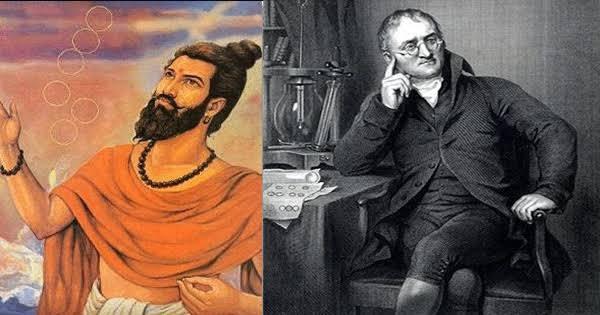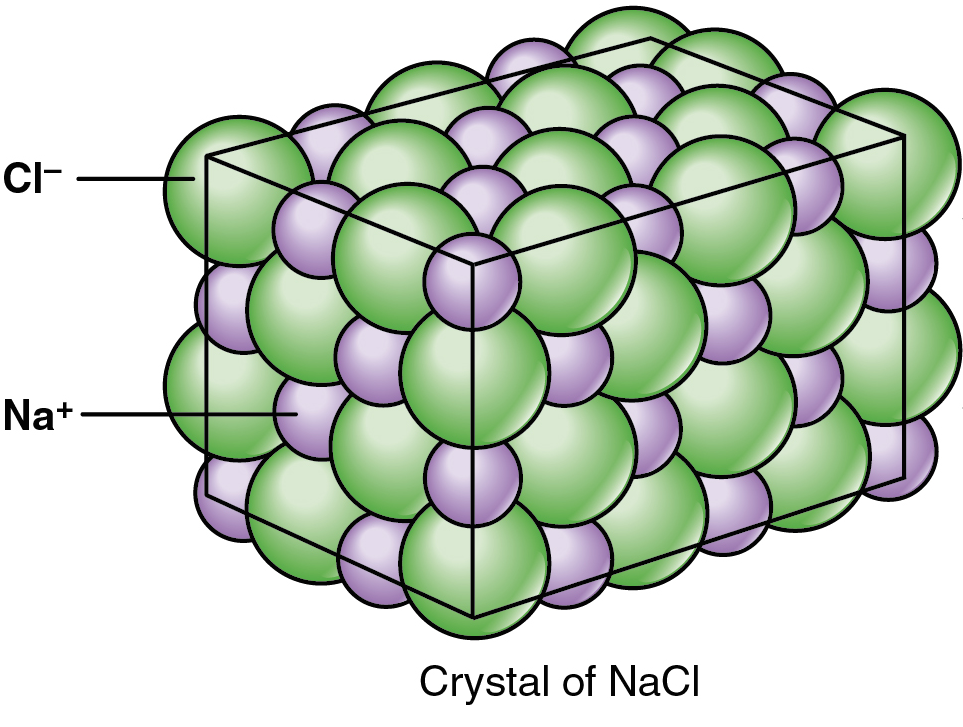Did Acharya Kanada describe atomic theory 1000s of years before John Dalton?

Modern science credits the atomic theory to an English chemist and physicist named John Dalton.
However,not many people are aware that a theory of Atoms was formulated approximately 2500 years before Dalton by an Indian sage and philosopher named “Acharya Kanada.”
Acharya Kanada was born in 600 BC in Gujarat and his real name was Kashyap.
He was an ancient Indian natural scientist and philosopher who founded the “Vaisheshika school of Indian philosophy” that represents the earliest Indian physics.
Kashyap displayed a keen sense of detail since childhood and minute things attracted his attention.
As a young boy, he once accompanied his father on a pilgrimage to Prayaga. He noticed that thousands of pilgrims in the town were littering its roads with flowers
and grains of rice which they offered at the temples by the shore of river Ganges.
Fascinated by the tiny particles, Kashyap began collecting the grains of rice from the ground while everyone else was busy offering prayers or bathing in the Ganges. Noticing this behaviour
from a boy of a well-to-do family, an inquisitive crowd gathered around him and started wondering why he was acting in such a strange manner.
When questioned about why he was collecting grains of rice that even a beggar wouldn’t touch, Kashyap replied that one grain in
itself may seem worthless but a collection of some hundred grains make up a person’s meal.
The collection of many meals would feed an entire family and ultimately the entire mankind was made up of many families. And for this reason alone, a single grain of rice was as
important as all the riches in the world.
People started calling him ‘Kanada’ after this incidence as ‘kan’ translates to the smallest particle in Sanskrit.
It was Kanada who first realized the idea that "anu"(atom) was an indestructible particle of matter
“सदकारणवन्नित्यम्” 4/1/1 (Vaisheshika sutra)
“The eternal is that which is existent and uncaused.”
This theory occurred to him while he was walking with food in his hand.
As he nibbled at the food in his hand, throwing away the small particles one by one until he was
unable to break it down anymore and it left a smell on his hands. He realized that he could not divide d food into further parts & the realization of a matter which cannot be divided further came into existence.

He called this indivisible matter, “anu”which literally means atom.
महत्यनेकद्रव्यवतात् रूपाञ्चोपलब्धिः॥४॥१1६॥
अरूपिष्वचाक्षुषाणि॥४।१।१२॥
“Acharya Kanada considered the atom minute objects invisible to the naked eye which come into being and vanished in an instant; they were indestructible and hence eternal”.
Adherents of this philosophy further held that atoms of same substance combined with each other to produce ‘Dvyanuka’ (bi atomic molecules) and ‘Tryanuka’ (tri-atomic molecules). This dvynuka has the properties similar to those of the two original paramanu.
Kanada also put forward the idea that atoms could be combined in various ways to produce ‘chemical changes’ in presence of other factors such as heat.He gave blackening of earthen pot and ripening of fruit as examples of this phenomenon.
“कारणगुणपूर्वकाः पृथिव्यां पाकजाः”(7/1/6)
His primary area of study was Rasavādam, considered to be a type of alchemy. He is said to have believed that all living beings are composed of five elements: water,fire,earth,air, ether.
He theorized that Gurutva (Gravity) was responsible for d falling of objects on the Earth.
Accordingly, the universe is the interplay of seven aspects or states of material things, namely:
1. Dravyam (matter)
2. Guna (Quality)
3. Karma (Action)
4. Samanya (Generic species)
5. Vishesha (Unique trait)
6. Samavaya (integrated part of the whole),
7. Abhava (Non-existence)
Dravyam (matter) is again subdivided into nine aspects:
1. Prithvi (Earth)
2. Jala (Water)
3. Teja (Light)
4. Vaayu (Gas)
5. Aakaasa (Ether)
6. Dika (Direction / space dimension)
7. Kaala (Time)
8. Maanas (Mind)
9. Atma (Soul)
Kanada defined ‘life’ as an organized form of atoms and molecules and ‘death’ as an unorganized form of those atoms and molecules.
According to author Dilip M. Salwi, “if Kanada’s sutras are analysed, one would find that his atomic theory was far more advanced
than those forwarded later by the Greek philosophers, Leucippus and Democritus.”
National Aeronautical Laboratory in Bangalore runs a science magazine in this great philosopher’s name called ‘Kanada’.
Source- Twitter Vशुद्धि @V_Shuddhi
Acharya Kanada: The Father of Atomic Theory
- Political Leaders
- Art & Crafts
- Dance & Music
- Sanatan Dharma
- Education & Training
- Food & Drinks
- Gaming
- Health & Fitness
- Home & Gardening
- Literature & Culture
- Love
- Medicine & Ayurveda
- Motors & Vehicles
- Movies & Cinema
- Parenting
- Politics
- Science & Technology
- Shopping
- Social Media
- Spirituality
- Sports
- War & History
- Yoga & Meditation
- Travel & Tourism
- Natural Disaster
- Business & Startups
- DIY & Home Decor
- Finance
- Personal
- News
- Pet Lovers
- Wild Life & Nature
- Podcast & Audio Books
- Poetry
- Law & Order
- Moral Stories
- Jokes & Humour
- Alte

